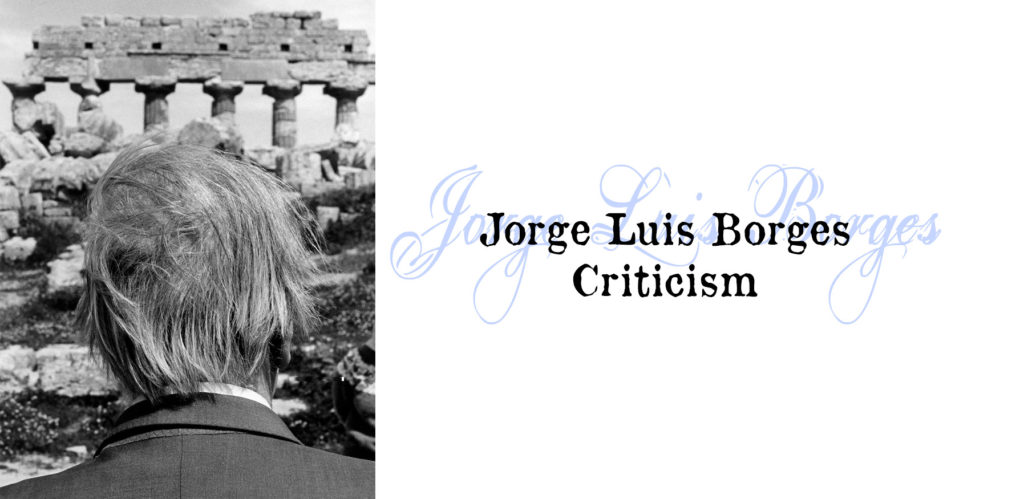Borges Criticism – 2000 to Present
- At February 13, 2023
- By Great Quail
- In Borges
 0
0
It is venturesome to think that a coordination of words (philosophies are nothing more than that) can resemble the universe very much.
—Jorge Luis Borges, “The Avatars of the Tortoise”
Borges Criticism: General Criticism 2000–Present
This page collects literary criticism written about Borges in the new millennium. All of these works are available in English, and focus on “general criticism” such as surveys, compendiums and correspondences, conference proceedings, traditional literary analysis, and so on. (A complete list of Borges Criticism can be accessed at the bottom of the page.) The books are listed in chronological order of publication. Clicking the image of a book takes you directly to Amazon.com. Wherever possible, links to the Internet Archive are provided. These “online editions” may or may not match the exact edition of the corresponding book.
Each book contains a brief description and a summary of its contents. Some have also been reviewed. If any knowledgable visitor would like to submit comments for any of the “unreviewed” works, please contact the Garden!
Humor in Borges
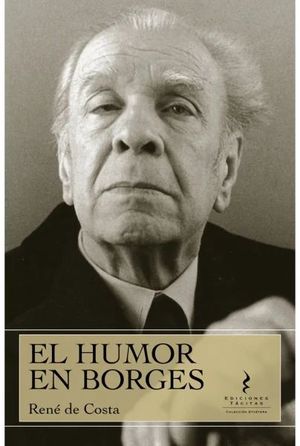 El humor en Borges By René de Costa Santiago: Ediciones Tácitas, 1999 |
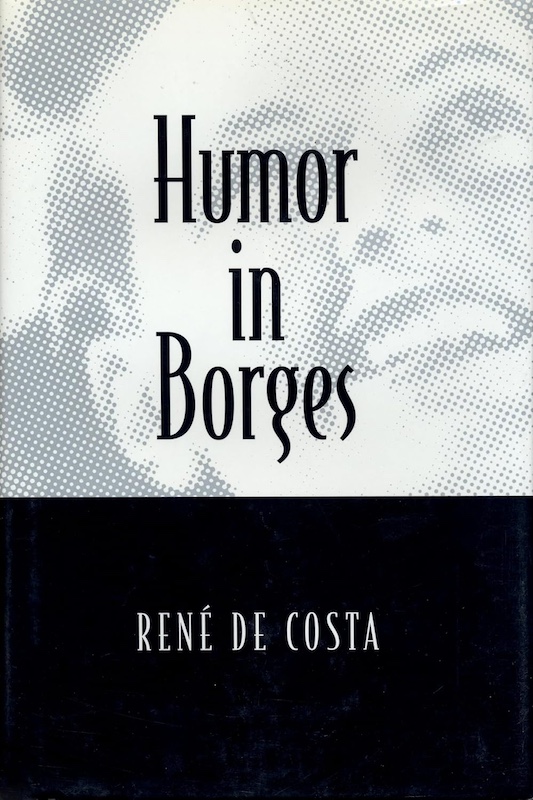 Humor In Borges By René de Costa Wayne State University Press, 2000 |
René de Costa is Professor Emeritus of Spanish and Spanish American Literatures at the University of Chicago. His Humor and Borges is part of Wayne State University’s “Humor in Life and Letters” series, which offers a “study of humor in a variety of cultural contexts and range from books of humor to books about humor, including studies of humor in literature.” The book was also published in Spanish by Ediciones Tácitas in Santiago. Although El humor en Borges came out a few months before the English version, I’m not sure whether de Costa wrote the book in English or Spanish first, or whether he prepared two simultaneous editions.
Written for an engaged “lay” reader rather than a committed Borges scholar, Humor In Borges attempts to rescue a more human Borges from beneath the layers of criticism and analysis his work so often accretes: “Borges finds much the same fault with the mindset marring a good deal of the academic criticism of his own work. People just don’t see what they’re looking at. Instead of simply reading what’s on the page, they read something else into it.” While some academics have complained about de Costa’s “pervasive strand of anti-intellectualism” or his eagerness to translate Spanish passages into English for readers without expertise in Latin American Studies, a more equitable critique is that de Costa can’t quite figure out his audience, and his observations never coalesce into a satisfying thesis. Still, it’s an enjoyable book if sometimes frustrating, and offers a welcome antidote to an overdose of Deleuze and Derrida.
Publisher’s Description: Jorge Luis Borges (1899-1986), an Argentine writer of serious avant-garde poetry and prose, often wrote of the humor in the works of contemporaneous authors such as Franz Kafka. In response to this humor, Borges created a comedic tradition all his own. Humor in Borges studies the humor embedded in the fiction of a serious and metaphysical literary figure. René de Costa shows how Borges was concerned with making the embedded humor in his work more apparent without abandoning the essential story line. De Costa examines the ways in which Borges transformed established modes of writing―the chronicle, the book review, the obituary, the detective story―into genre parodies. He looks at Borges’s canonical collections, identifying the humor in such simple things as a footnote, a false epigraph, or a postscript. Humor in Borges couples elegant scholarship with a comedic edge and is both accessible and enjoyable to read. Scholars and students of twentieth-century Spanish and Latin American literature will delight in this fascinating look at laughter in the work of Jorge Luis Borges.
Reviews: Bruno Bosteels’ review of Humor in Borges was published in Latin American Literary Review, Vol. 32, No. 64 (July–Dec. 2004): pp. 120–122, [JSTOR paywall]. Claudio Canaparo’s review appeared in Modern Language Review, Vol. 96, Part 4 (Oct. 2001): pp. 1123–1124, [Project MUSE paywall].
Bloom’s Major Short Story Writers: Jorge Luis Borges
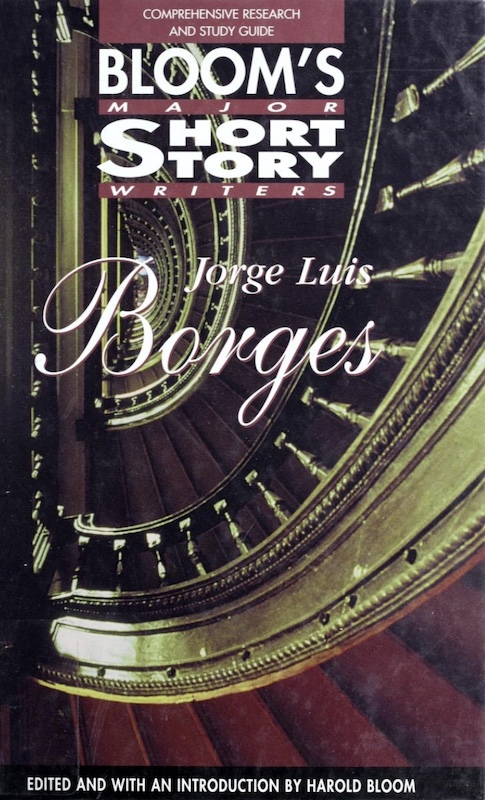
Bloom’s Major Short Story Writers: Jorge Luis Borges
Edited by Harold Bloom
Chelsea House, 2002
Online at: Internet Archive
One of the United States’ genuine literary lions, Harold Bloom (1930–2019) was an influential scholar and critic, a celebrated Shakespearian, and a famously staunch defender of the Western canon. A professor at Yale University for over sixty years, Bloom published dozens of books, from explorations of the Kabbalah to The Anxiety of Influence, a key work of twentieth-century literary criticism. Indeed, Bloom’s name became something of a brand—this is the second of three Borges compilations to bear his name. Designed as a student resource, Jorge Luis Borges examines five of Borges’ most well-known stories: “Death and the Compass,” “Tlön, Uqbar, Orbis Tertius,” “The Immortal,” “The Aleph,” and “The South.” Each chapter includes a synopsis, a list of characters, and excerpts from various critical essays.
Bloom’s BioCritiques: Jorge Luis Borges
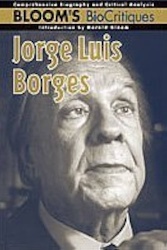
Bloom’s BioCritiques: Jorge Luis Borges
Edited by Harold Bloom
Chelsea House, 2004
Part of Harold Bloom’s “BioCritiques” series, this is a collection of essays and papers on Borges with an introduction by Harold Bloom.
Publisher’s Description: In addition to a lengthy biography, each book includes an extensive critical analysis of the writer’s work, as well as critical views by important literary critics throughout history. These volumes are the perfect introduction to critical study of the important authors currently read and discussed in high schools, colleges, and graduate schools. Struggling with poor eyesight and eventual blindness for most of his life, Borges went on to become of one of the greatest short-story writers of 20th century. His fiction, often metaphysical and fantastic has been said to influence the great magical realists.
Borges in 90 Minutes
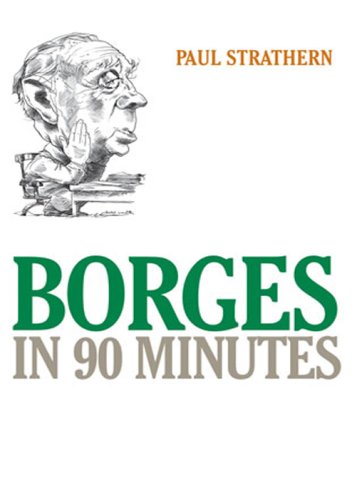
Borges in 90 Minutes
By Paul Strathern
Ivan R. Dee, 2006
Borges in 90 Minutes is part of Paul Strathern’s “90 Minutes” series, a collection of slim books intended to introduce an author to a famous writer.
Publisher’s Description: Weaving fiction with fact, fantastic matter with historical figures, Borges’ frequent theme of a world where time, culture, and place converge is not only timely but pertinent in our advance toward globalization. Drawing from his multi-ethnic and -lingual upbringing in Argentina, Borges’ focus on universal themes early on came to belittle the sentiments of racism and communism, earning him widespread recognition. His work is both timeless and touching, a product of deep suffering and incorrigible innocence. Borges in 90 Minutes offers a concise, expert account of Borges’ life and ideas and explains their influence on literature and on man’s struggle to understand his place in the world. The book also includes a list of Borges’ chief works, a chronology of his life and times, and recommended reading for those who wish to delve deeper.
Thinking with Borges
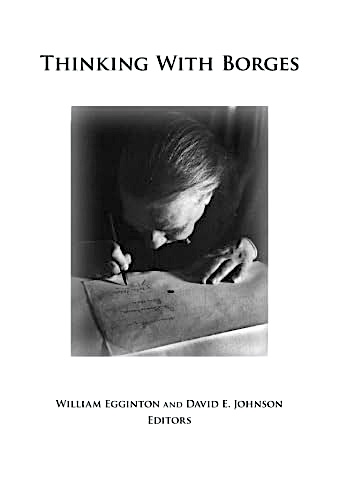
Thinking with Borges
Edited by William Egginton & David E. Johnson
The Davies Group Publishers, 2009
American literary critic William Eggington is a Professor in the Humanities, chair of the Department of Modern Languages and Literatures, and Director of the Alexander Grass Humanities Institute at the Johns Hopkins University, where he teaches on “Spanish and Latin American literature, literary theory, and the relation between literature and philosophy.” He is the author of The Rigor of Angels: Borges, Heisenberg, Kant, and the Ultimate Nature of Reality. David E. Johnson is Associate Professor of Comparative Literature at the University at Buffalo, State University of New York. His areas of interest include Borges, Derrida, “continental and Latin American philosophy, and Latin American narrative.” Johnson is the co-editor of CR: The New Centennial Review and the author of Kant’s Dog: On Borges, Philosophy, and the Time of Translation.
Publisher’s Description: Thinking with Borges engages the most pressing and persistent questions of the philosophical tradition—including those of time, eternity, politics, law, justice, language, reality, memory— through original and often brilliant readings of the Borgesian archive. Eschewing the tired debate as to whether Borges is a writer or a thinker and going beyond Borges’s own self-deprecating claims that he deployed the philosophical canon only for aesthetic purposes, the contributors to Thinking with Borges demonstrate that he seeks to answer the most enduring philosophical questions in ways that both contest and extend the philosophical tradition. The essays included in Thinking with Borges take seriously Borges’s references to Heidegger, Kant, Spinoza, and Wilkins, among so many others. In short, rather than providing a mere catalogue of the philosophers, schools of thought, and themes that appear in Borges’s writing, Thinking with Borges represents a sustained reflection on Borges’s contribution to the art of thinking. In essays whose topics range from Borges’s relation to Jewish mysticism to the paradoxes of time in his fiction, from the decision and constitution of the enemy to the impossible possibility of the law, the authors gathered in this volume show time and again how Borges’s writing undermines any facile distinction between literature and philosophy.
Table of Contents:
- David E. Johnson, “Introduction: Borges and the Letter of Philosophy”
- Stephen Gingerich, “Nothing and Everything: Theoretical and Practical Nihilism in Borges”
- Bruno Bosteels, “Borges as Antiphilosopher”
- William Egginton, “Three Versions of Divisibility: Borges, Kant, and the Quantum”
- Krzysztof Ziarek, “The ‘Fiction’ of Possibility”
- Santiago Colás, “The Difference that Time Makes: Hopelessness and Potency in Borges’s El Aleph”
- Brett Levinson, “Crossbreeds: Aesthetics Misencounters Politics in ‘El evangelio según Marcos’”
- Alberto Moreiras, “Newness, World Language, Alterity: On Borges’s Mark”
- Kate Jenckes, “Borges Before the Law”
- Eva Horn, “Borges’s Duels: Friends, Enemies, and the Fictions of History”
- Lisa Block de Behar, “Antecedents of an Unexpected Poetic Affinity: Jorge Luis Borges as Reader of Martin Buber”
A Companion to Jorge Luis Borges
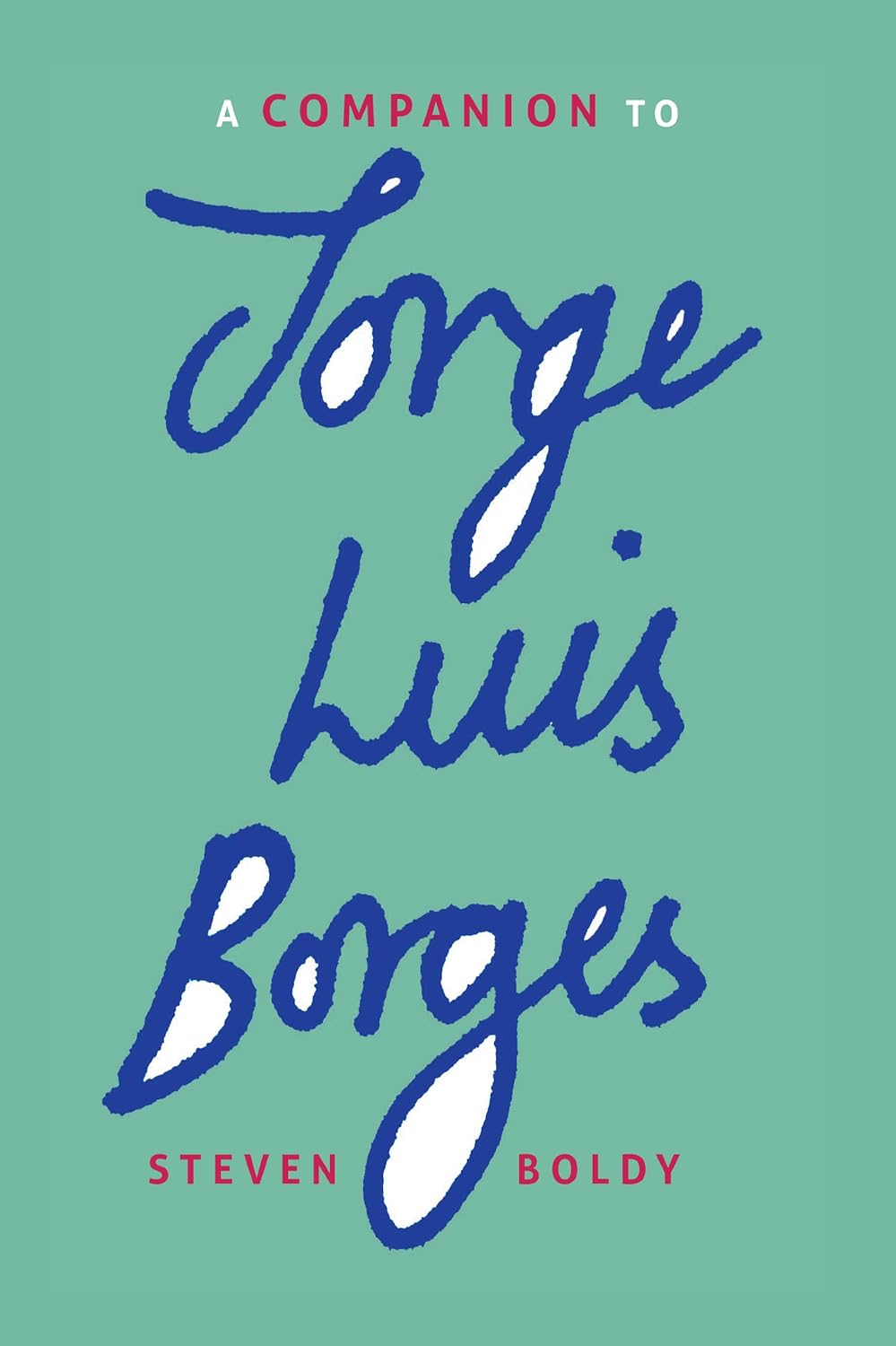
A Companion to Jorge Luis Borges
By Steven Boldy
Tamesis Books, 2009
Online at: JSTOR [Paywall]
Steven Boldy is a professor of Latin American Literature at Cambridge University.
Publisher’s Description: This Companion has been designed for keen readers of Borges whether they approach him in English or Spanish, within or outside a university context. It takes his stories and essays of the forties and fifties, especially Ficciones and El Aleph, to be his most significant works, and organizes its material in consequence. About two thirds of the book analyzes the stories of this period text by text. The early sections map Borges’s intellectual trajectory up to the fifties in some detail, and up to his death more briefly. They aim to provide an account of the context which will allow the reader maximum access to the meaning and significance of his work and present a biographical narrative developed against the Argentine literary world in which Borges was a key player, the Argentine intellectual tradition in its historical context, and the Argentine and world politics to which his works respond in more or less obvious ways.
Table of Contents:
I. Context
Perspectives
Family History, Natural History
Life and Literature
Metaphysics, the Cult of Courage
II. Key Works
From Book Review to Fiction: ‘The Approach to Al-Mu’tasim’
Fictions, Part I: The Garden of Forking Paths (1941)
Fictions, Part II: Artifices (1944)
The Aleph (1949)
Reviews: Eamon McCarthy’s review of A Companion to Jorge Luis Borges was published in The Modern Language Review, Vol. 107, No. 1 (January 2012): pp. 298–299, [JSTOR paywall]. A short, positive, and direct review, McCarthy concludes:
This book will fast become a key text on university courses. The first section gives a particularly helpful overview and is the perfect tool for undergraduates trying to approach Borges’s vast output and the ever-increasing secondary criticism on his work. The use of English and Spanish throughout makes it accessible to students encountering Borges in translation. The second section of the Companion will also provide the specialist with a wonderfully concise and reliably balanced reminder of individual stories and key critical approaches to them. This book is an ideal introduction to some of the finest short stories written in the twentieth century.
Borges’ Short Stories: A Reader’s Guide
Borges’ Short Stories: A Reader’s Guide
By Rex Butler
Continuum, 2010
Rex Butler is Professor of Art History at the School of Art, Design and Architecture at Monash University, Melbourne.
Publisher’s Description: The Argentine writer Jorge Luis Borges is undoubtedly one of the defining voices of our age. Since the Second World War, his work has had an enormous impact on generations of writers, philosophers, and literary theorists. This guide offers a close reading of ten of Borges’ greatest short stories, seeking to bring out the logic that has made his work so influential. The main section of the guide offers an analysis of such key terms in Borges’ work as “labyrinth” and the “infinite” and analyzes Borges’ particular narrative strategies. This guide also sets Borges’ work within its wider literary, cultural and intellectual contexts and provides an annotated guide to both scholarly and popular responses to his work to assist further reading.
Table of Contents:
- Contexts
- Reading the Short Stories: The Labyrinthine
- Reading the Short Stories: The Borgesian
- Reading the Short Stories: Infinity and One
- Reading the Short Stories: Fictions
- Reception and Influence
- Annotated Bibliography
The Cambridge Companion to Jorge Luis Borges
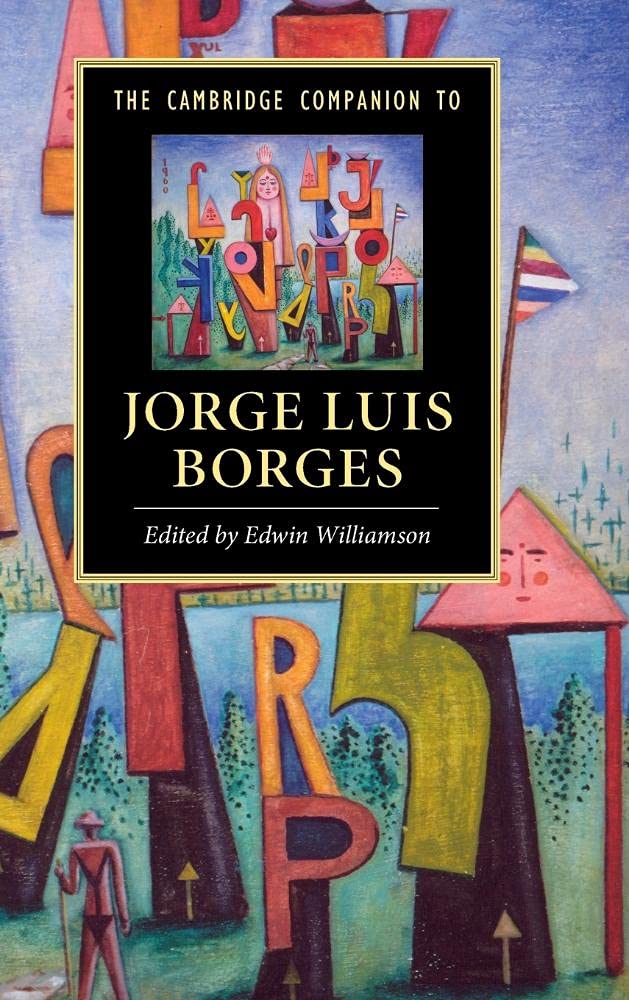
The Cambridge Companion to Jorge Luis Borges
Edited by Edwin Williamson
Cambridge University Press, 2014
Online at: Internet Archive
The Cambridge Companion to Jorge Luis Borges is a collection of essays organized into thematic chapters. Designed to develop of broad portrait of Borges that covers his entire career, the essays were selected and edited by Edwin Williamson, the King Alfonso XIII Professor of Spanish Studies at the University of Oxford and the author of Borges: A Life. While each essay is by a different author and covers a different topic, they generally written in an approachable style that forgoes the usual academic jargon. As one might expect from a project spearheaded by Williamson, the Andrew Hurley translations and titles are preferred over the “classic” Normal Thomas di Giovanni translations. (For a glimpse into the politics behind these decisions, see Borges Biographies.)
Publisher’s Description: Jorge Luis Borges was one of the great writers of the twentieth century and the most influential author in the Spanish language of modern times. He had a seminal influence on Latin American literature and a lasting impact on literary fiction in many other languages. However, Borges has been accessible in English only through a number of anthologies drawn mainly from his work of the 1940s and 1950s. The primary aim of this Companion is to provide a more comprehensive account of Borges’s oeuvre and the evolution of his writing. It offers critical assessments by leading scholars of the poetry of his youth and the later poetry and fiction, as well as of the ‘canonical’ volumes of the middle years. Other chapters focus on key themes and interests, and on his influence in literary theory and translation studies.
Table of Contents:
- Clive Griffin, “Philosophy and Fiction”
- Floyd Merrill, “Science and Mathematics in a Literary Mode”
- Michael Wood, “Borges and Theory”
- Suzanne Jill Levine, “Borges on Translation”
- Evelyn Fishburn, “Jewish Christian, and Gnostic Themes”
- Luce López-Baralt, “Islamic Themes”
- Philip Swanson, “Borges and Popular Culture”
- Robin Fiddian, “Post-Colonial Borges”
- Daniel Balderston, “Fictions”
- Roberto González Echevarría, “The Aleph”
- Alfred Macadam, “The Maker”
- Arturo Echevarría, “Brodie’s Report”
- Efraín Kristal, “The Book of Sand and Shakespeare’s Memory”
- Rafael Olea Franco, “The Early Poetry (1923–1929)”
- Jason Wilson, “The Late Poetry (1960–1985)”
- Edwin Williamson, “Borges In Context: The Autobiographical Dimension”
Reviews: Pablo Brescia’s review of The Cambridge Companion was published in Revista de Estudios Hispánicos, Vol. 51, No. 2 (June 2017): pp. 504–505, [Project MUSE paywall]. He finds the collection a mixed bag:
Given the extensive and frequently repetitive scholarship on Borges, it is quite difficult to be enthralled about still one more book about him. Yet, The Cambridge Companion to Jorge Luis Borges is successful in achieving three main objectives: 1) introducing Borges’s literature to the non-specialist while at the same time offering something of value to literary critics; 2) providing a malleable structure, with chapters that alternate between a focus on themes (“Philosophy and Fiction,” “Borges on Translation”) and a focus on specific works (The Aleph, Brodie’s Report); and 3) presenting a comprehensive, kaleidoscopic, “Borgesian” view of the author’s world. These objectives are enhanced by a detailed chronology, suggestions for further readings, and a subject index… In the fourteen chapters, some critics make valuable contributions to Borgesian studies, while others cannot help repeating hackneyed ways of reading Borges or continuing to emphasize one aspect to the detriment of others…
Borges
Borges: An Introduction
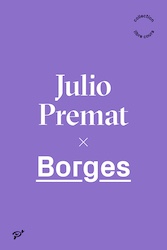 Borges: An Introduction By Julio Premat Presses Universitaires de Vincennes, 2018 |
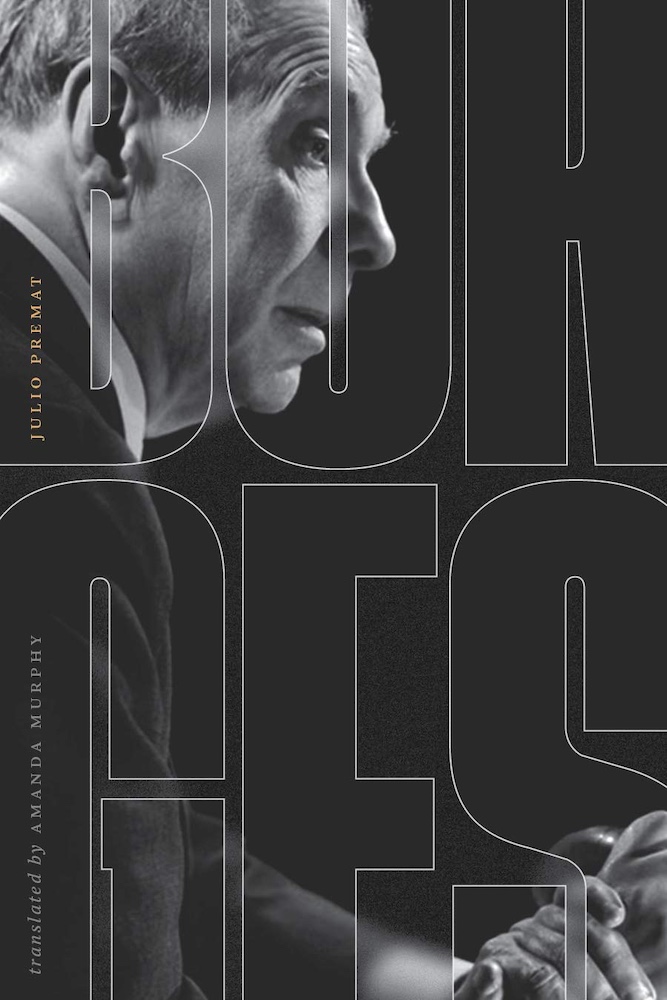 Borges: An Introduction By Julio Premat Translation by Amanda Murphy Vanderbilt University Press, 2021 |
Julio Premat is Professeur des Universités at Université Paris 8 (Vincennes-Saint Denis), and a senior researcher at the Institut Universitaire de France. Borges: An Introduction is the 2021 English translation of his 2018 book, Borges, originally published in French. He’s also the author of Borges, la reinvención de la literatura, published in 2022 by Paidós. (I’m not sure whether this is an expanded version of Borges, or an entirely new book.)
Publisher’s Description: This book, available for the first time in English, offers a thorough introductory reading of Jorge Luis Borges, one of the most remarkable and influential writers of the twentieth century. Julio Premat, a specialist in the field of Borges studies, presents the main questions posed by Borges’s often paradoxical writing, and leads the novice through the complexity and breadth of Borges’s vast literary production. Originally published in French by an Argentine ex-pat living in Paris, Borges includes the Argentine specificities of Borges’s work—specificities that are often unrecognized or glossed over in Anglophone readings. This book is a boon for university students of philosophy and literature, teachers and researchers in these fields who are looking to better understand this complex author, and anyone interested in the advanced study of literature. Somewhere between a guidebook and an exhaustive work of advanced research, Borges is the ultimate stepping-stone into the deeper Borgesian world.
Table of Contents:
Introduction: A Classic of Modernity
Part I. A Single Sightless Self, a Plural I: Figures
1. The Works of a Hero
2. The Son at Work
3. The Clairvoyance of the Blindman
Part II. A Pensive Sentiment: Materials
4. Impelled by his Germanic Blood: Biography and the Meaning of the Story
5. The Universe, Whodunit?: Reading and the Detective Novel
6. The Library: Tradition, Betrayal, Transgression
7. Forms of Eternity
Notes
Reviews: Nora C. Benedict’s review of Borges: An Introduction was published in Variaciones Borges No. 54 (2022): pp. 237–240, [JSTOR paywall]. Aside from fining a few “minor quibbles,” Benedict finds Premat’s book a “well-crafted introduction to Borges…approachable for a variety of readers.”
How Borges Wrote
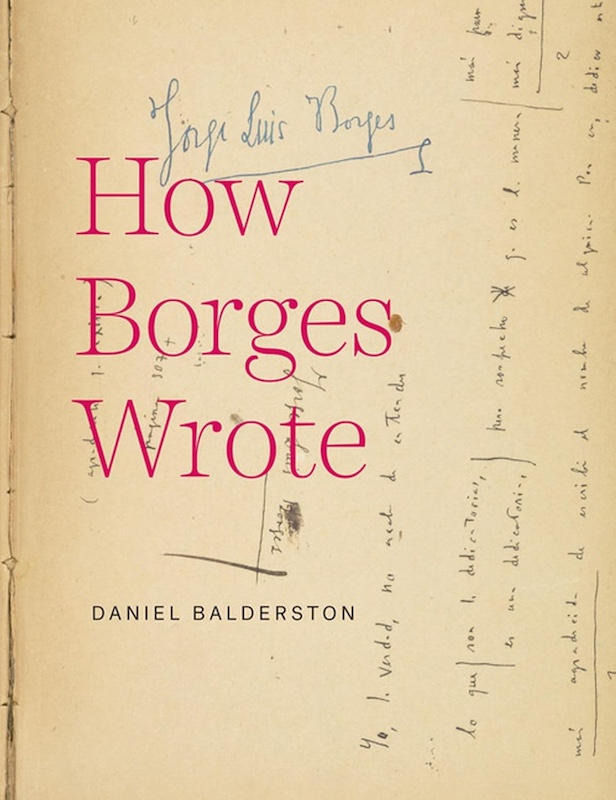
How Borges Wrote
By Daniel Balderston
University of Virginia Press, 2018
Online at: JSTOR [Paywall]
A preeminent Borges scholar and literary critic, Daniel Balderston is the Mellon Professor of Modern Languages at the University of Pittsburgh. He is also the chair of the Borges Center, the editor of Variaciones Borges, and the author of Out of Context: Historical Reference and the Representation of Reality in Borges.
Publisher’s Description: A distinguished poet and essayist and one of the finest writers of short stories in world letters, Jorge Luis Borges deliberately and regularly altered his work by extensive revision. In this volume, renowned Borges scholar Daniel Balderston undertakes to piece together Borges’s creative process through the marks he left on paper. Balderston has consulted over 170 manuscripts and primary documents to reconstruct the creative process by which Borges arrived at his final published texts. How Borges Wrote is organized around the stages of his writing process, from notes on his reading and brainstorming sessions to his compositional notebooks, revisions to various drafts, and even corrections in already-published works. The book includes hundreds of reproductions of Borges’s manuscripts, allowing the reader to see clearly how he revised and “thought” on paper. The manuscripts studied include many of Borges’s most celebrated stories and essays—“The Aleph,” “Kafka and His Precursors,” “The Cult of the Phoenix,” “The Garden of Forking Paths,” “Emma Zunz,” and many others—as well as lesser known but important works such as his 1930 biography of the poet Evaristo Carriego. As the first and only attempt at a systematic and comprehensive study of the trajectory of Borges’s creative process, this will become a definitive work for all scholars who wish to trace how Borges wrote.
Reviews: Faith Blackhurst’s review of How Borges Wrote was published in Spanish and Portuguese Review, No. 5 (2019): pp. 143–145, [PDF]. Alfredo Alonso Estenoz’s review appeared in Textual Cultures, Vol. 12, No. 1 (Spring 2019): pp. 183–186, [JSTOR paywall]. José J. Álvarez’s review appeared in Revista de Estudios Hispánicos, Vol. 54, No. 1 (March 2020): pp. 295–297, [Project MUSE paywall]. An excellent overview of Balderston’s book is provided by this excerpt from Álvarez’s review:
How Borges Wrote is an ambitious and exhaustive scholarly endeavor […] the result of the study of over 180 manuscripts organized and analyzed with the precision and care of a seasoned scholar who has devoted almost forty years to studying Borges’s work and who has authored, co-authored, and edited numerous essential books, essays, indexes, and bibliographies on the Argentine writer. How Borges Wrote is also remarkably transparent and direct in its methods and objectives: in it, Balderston applies strategies extrapolated from genetic criticism to the study of Borges’s marginalia, outlines, and drafts with the goal of shedding light on his compositional practices. Drawing general conclusions about Borges’s writing process presents at least two major challenges. It demands extensive knowledge of his oeuvre and requires access to numerous manuscripts that (in Borges’s case) are scattered throughout libraries and private collections. Successfully navigating both challenges, Balderston offers the reader an exemplary volume divided into eight content chapters plus three very useful appendices featuring a chronological list of manuscripts consulted and nearly 100 pages of facsimiles and transcriptions (both diplomatic and linear) that make the book an essential tool for future Borges scholarship.
Balderston’s book is interesting, engaging, and, at times, surprising. His clear, dynamic prose—which is generally divested of jargon—takes the reader through different stages in the composition of short stories, essays, and poems included in Fervor de Buenos Aires (1923), Evaristo Carriego (1930), El jardín de senderos que se bifurcan (1941), and Otras inquisiciones (1952), to name a few. The analysis of variants, corrections, interpolations, and quotes throughout various drafts affords Balderston the space to display his knowledge of the subject while identifying and explaining references that speak to the internal cohesion of Borges’s work as well as to his ample knowledge of philosophy, history, art, literature, Buddhism, and mathematics. To share the experience of approaching Borges’s manuscripts, Balderston devotes significant space to discussing their materiality, accounting for the disposition of the text on the page, contextualizing deletions, additions, and revisions, and elaborating on Borges’s idiosyncratic notation system, as well as on the different handwriting styles and rubrics he used throughout the years. Balderston’s interest in the manuscripts’ materiality also dictates the organization of the volume, which favors drafting practices, notation strategies, and medium over a more rigid chronological configuration.
Borges Beyond the Visible
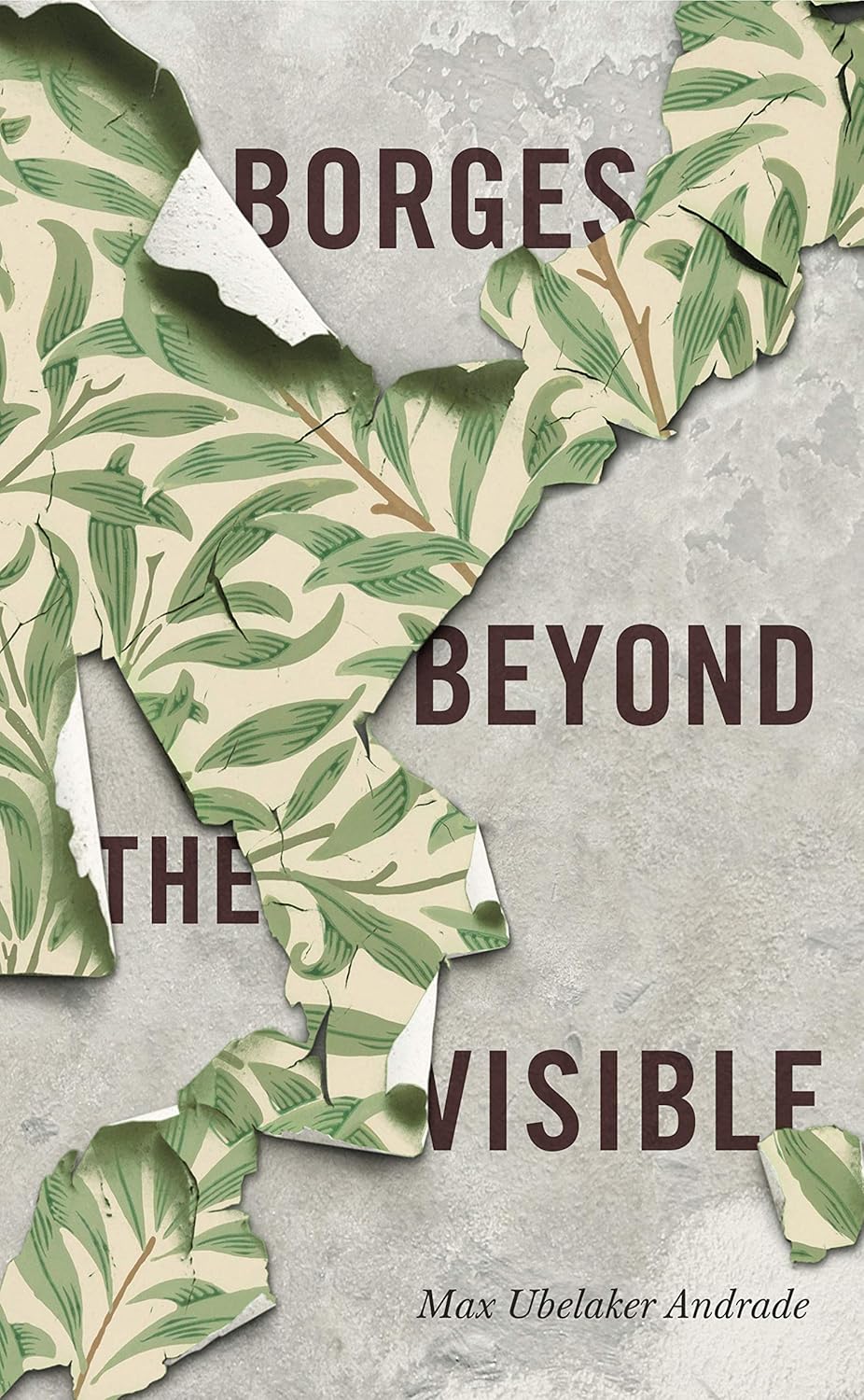
Borges Beyond the Visible
By Max Ubelaker Andrade
Penn State University Press, 2019
Max Ubelaker Andrade is Associate Teaching Professor in Latin American Studies at the University of Massachusetts Lowell.
Publisher’s Description: Borges Beyond the Visible presents radically new readings of some of Jorge Luis Borges’s most celebrated stories. Max Ubelaker Andrade shows how Borges employed intertextual puzzles to transform his personal experiences with blindness, sexuality, and suicide while allowing readers to sense the transformative power of their own literary imaginations. In readings of “Tlön, Uqbar, Orbis Tertius,” “El Aleph,” and “El Zahir,” Ubelaker Andrade argues that Borges, considering his own impending blindness, borrowed from Islam’s prohibitions on visual representation to create a “literary theology”—a religion focused on the contradictions of literary existence and the unstable complexities of a visual world perceived without everyday sight. Embracing these contradictions allowed Borges to transform his relationships with sex, sexuality, and family in multilayered stories such as “Emma Zunz,” “La intrusa,” and “El jardín de senderos que se bifurcan.” Yet these liberating transformations, sometimes offered to the reader as a paradoxical “gift of death,” are complicated by “La salvación por las obras,” a story built around Borges’s relationship with a suicidal reader and the woman to whom they were both connected. The epilogue presents “Místicos del Islam,” an unpublished essay draft by Borges, as a key source of insight into an irreverent, iconoclastic writing practice based on a profound faith in fiction. Compelling and clear, Borges Beyond the Visible is a revelatory examination of the work of one of the most influential authors of the twentieth century. It opens up exciting areas of inquiry for scholars, students, and readers of Borges.
Table of Contents:
- Borges’s Literary Theology: Fiction and the Visible
- Sex, Borrowed Bodies, and the Idea of Literary Progeny
- The Risk of Death and the Possibility of Literary Salvation
- Epilogue: In Case of Emergency, Burn Your Books
Reviews: Robin Fiddian’s review of Borges Beyond the Visible was published in Modern Language Review, Vol. 115, Part 3 (July 2020): pp. 741–742, [Project MUSE paywall]. Brian Gollnick’s review appeared in Variaciones Borges No. 51 (2021): pp. 211–214, [JSTOR paywall]. He finds the book “a readable and deeply researched examination of visuality as a touchstone in Borges’ exploration of literature and representation. Ubelaker Andrade frames his argument rhetorically within Borges’ loss of his eyesight. That framework would seem to insert Beyond the Visible into biographically informed criticism, but the approach here is textual analysis of a consistently high quality.”
Jorge Luis Borges in Context
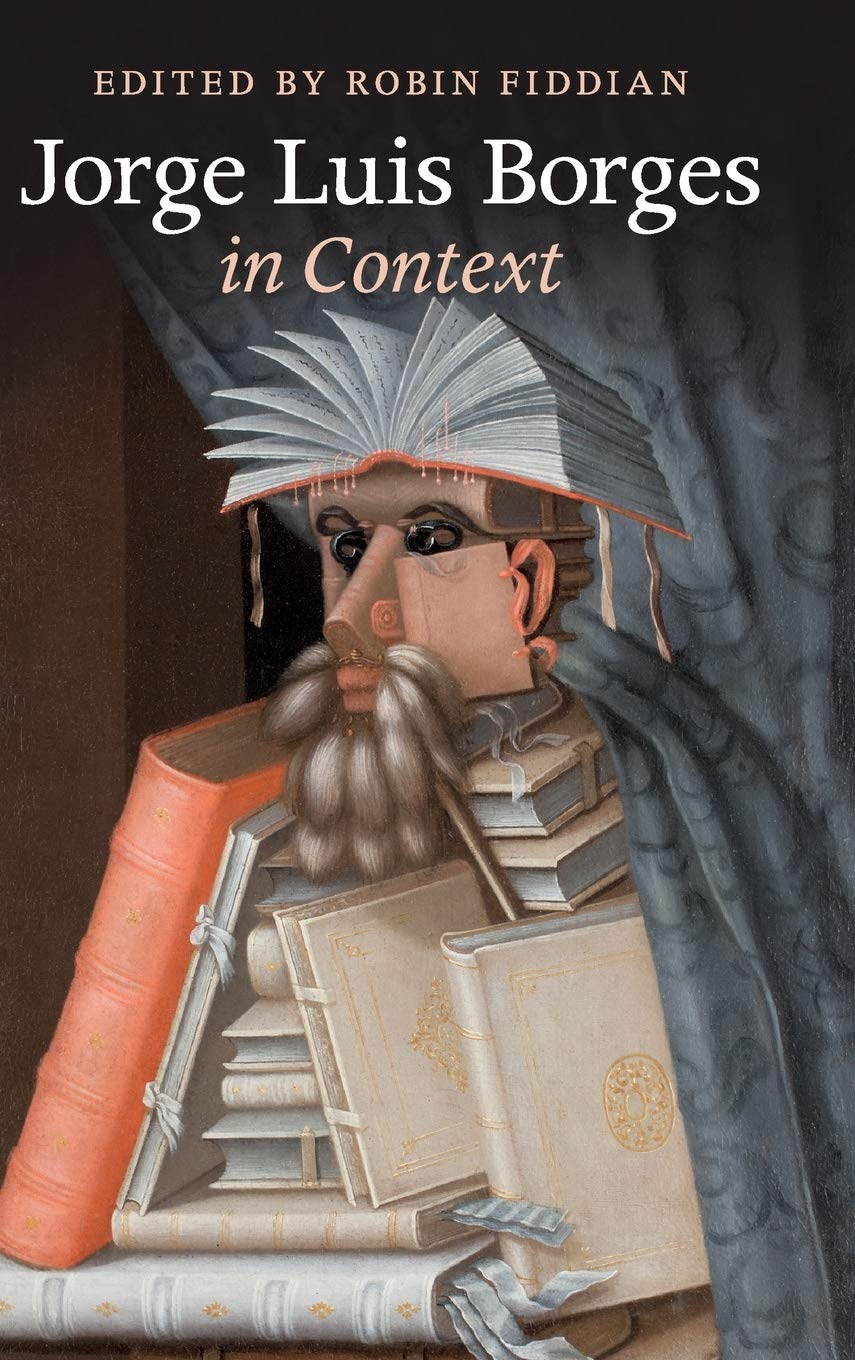
Jorge Luis Borges in Context
Edited by Robin Fiddian
Cambridge University Press, 2020
Robin Fiddian is Emeritus Fellow at Wadham College, University of Oxford. Specializing in Latin American literature and cinema, he has written extensively on Fernando del Paso, Gabriel García Márquez, and Jorge Luis Borges.
Publisher’s Description: Jorge Luis Borges (1899-1986) is Argentina’s most celebrated author. This volume brings together for the first time the numerous contexts in which he lived and worked; from the history of the Borges family and that of modern Argentina, through two world wars, to events including the Cuban Revolution, military dictatorship, and the Falklands War. Borges’ distinctive responses to the Western tradition, Cervantes and Shakespeare, Kafka, and the European avant garde are explored, along with his appraisals of Sarmiento, gauchesque literature and other strands of the Argentine cultural tradition. Borges’ polemical stance on Catholic integralism in early twentieth-century Argentina is accounted for, whilst chapters on Buddhism, Judaism and landmarks of Persian literature illustrate Borges’s engagement with the East. Finally, his legacy is visible in the literatures of the Americas, in European countries such as Italy and Portugal, and in the novels of J. M. Coetzee, representing the Global South.
Borges and the Literary Marketplace
How Editorial Practices Shaped Cosmopolitan Reading
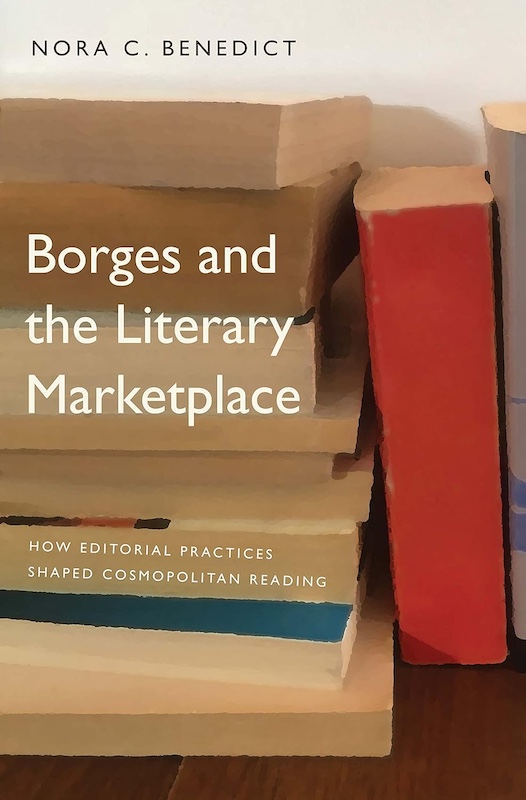
Borges and the Literary Marketplace
By Nora C. Benedict
Yale University Press, 2021
Online at: JSTOR [Paywall]
Nora C. Benedict is Assistant Professor of Spanish and Digital Humanities in the Romance Languages Department at the University of Georgia. Her research focuses on “twentieth-century Latin American literature, descriptive bibliography, book history, and questions of access and maintenance surrounding both digital and print cultures.”
Publisher’s Description: Jorge Luis Borges (1899–1986) stands out as one of the most widely regarded and inventive authors in world literature. Yet the details of his employment history throughout the early part of the twentieth century, which foreground his efforts to develop a worldly reading public, have received scant critical attention. From librarian and cataloguer to editor and publisher, this writer emerges as entrenched in the physical minutiae and social implications of the international book world. Drawing on years of archival research coupled with bibliographical analysis, Nora C. Benedict explains how Borges’s more general involvement in the publishing industry influenced not only his formation as a writer, but also global book markets and reading practices in world literature. In this way she tells the story of Borges’s profound efforts to revolutionize and revitalize literature in Latin America through his various jobs in the publishing industry.
Table of Contents:
Introduction: Sorting Through the Stacks
1. Borges and the Book
2. Borges as Author
3. Borges as Critic and Collaborator
4. Borges as Editor and Anthologist
5. Borges as Publicist and Promoter
6. Borges as Publisher
Conclusion: Books After Borges
Reviews: M.A. Orthofer’s review of Borges and the Literary Marketplace was posted to “The Complete Review” on 5 December 2021. Ian Ellison’s review was published in Modern Language Review, Vol. 119, Part 1 (January 2024): pp. 166–167, [Project MUSE paywall]. He called Benedict’s book “a masterclass in meticulous archival research and…rigorous application in literary studies.” Alejandra Uslenghi’s review appeared in the Hispanic Review, Vol. 91, No. 4 (Autumn 2023): pp. 660–664, [Project MUSE paywall]. An excellent overview of Benedict’s book is provided by this excerpt from Uslenghi’s review:
There are few modernist authors whose writing is so closely tied to the lure of the book form as Argentine writer Jorge Luis Borges. While others have been studied through their manuscripts for traces of their aesthetic form, Borges materially and fictionally has always been associated with the book and the library as singular spaces that came to represent the intertwinement of reading and writing in his oeuvre. Recent years have seen the development of a keen interest in the composition and final destiny of Borges’s own several personal libraries. Just to name a few, Laura Rosato and Germán Alvarez’s Borges, libros y lecturas (2014–2017) catalog and examines his notes in many of the books at the Biblioteca Nacional Mariano Moreno; Fernando Flores Maio’s La biblioteca de Borges (2018) examines the books held by Fundación Jorge Luis Borges; and the holdings of the Fundación San Telmo’s Borges Collection; and those of American universities’ repositories of manuscripts, received critical attention in Daniel Balderston’s El método Borges (2021).
Nora C. Benedict’s Borges and the Literary Market is a fantastic addition to this trend, one from which a new facet of Borges emerges, deeply rooted in the examination of his many roles as librarian, cataloger, anthologist, editor, publisher, critic, and collaborator, all complementary to the writer of world literature, as Borges is currently studied in American academia. Her analysis offers the Borges scholar not only a wonderful, exciting panorama of the “golden years” of the Argentine publishing industry, but also provides a clear picture of Borges’s vision for this booming industry as a mechanism for crafting a cosmopolitan readership. As radio, cinema, and the mass illustrated press set to conquer the new cosmopolitan, modern, and easily distracted mass audience, Borges’s vision for literature and reading practices did not diminish, but only grew bolder and more complex, taking on foreign traditions and other languages. As Benedict writes in her introduction, the modern writer is not bound by language nor by his native geographical region, though it is marked by his relationship to the literary marketplace conceived as “a global history of how books make the world and how the world makes books.”
Additional Information
Nora Benedict herself applied a “Page 99 Test” to Borges and the Literary Marketplace for Marshal Zeringue’s unique site.
The Oxford Handbook of Jorge Luis Borges
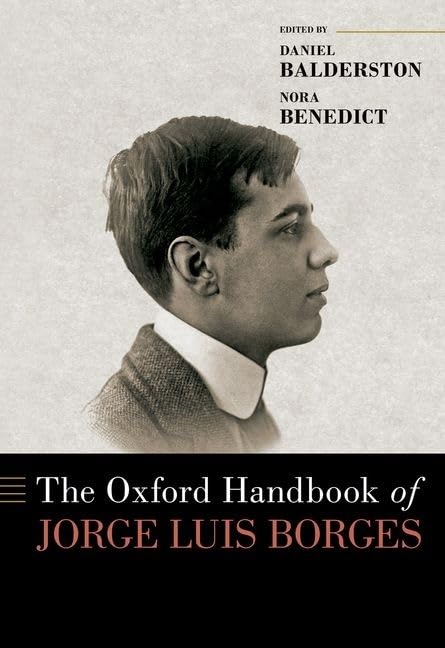
The Oxford Handbook of Jorge Luis Borges
Edited by Daniel Balderston & Nora Benedict
Oxford University Press, 2024
A preeminent Borges scholar and literary critic, Daniel Balderston is the Mellon Professor of Modern Languages at the University of Pittsburgh. He is also the chair of the Borges Center, the editor of Variaciones Borges, and the author of Out of Context: Historical Reference and the Representation of Reality in Borges and How Borges Wrote, profiled above. Nora C. Benedict is Assistant Professor of Spanish and Digital Humanities in the Romance Languages Department at the University of Georgia. She is the author of Borges and the Literary Marketplace, also profiled above.
The Garden of Forking Paths has a review copy of this book, and it is—huge. An oversized book with relatively small print, it runs over 600 pages and contains three dozen essays. Obviously it’s going to take a long time to read through this collection, but after I’ve sampled a few essays I’ll return with some additional commentary. Until then, here’s the publisher’s description and a full listing of its contents:
Publisher’s Description: Most known for his creative fictions that tackle literary questions of authorship as well as more philosophical notions such as multiverse theory, Argentine author Jorge Luis Borges (1899-1986) has captivated scholars from a variety of disciplines since his emergence on the international scene. However, much of the scholarship surrounding Borges does not focus on the reception of Borges’s works in the fields of philosophy, the visual arts, film, political science, media theory, mathematics, and law, nor do it consider how his affiliations and interests changed over the course of his long life. In The Oxford Handbook of Jorge Luis Borges, editors Daniel Balderston and Nora Benedict, along with a team of international scholars, contextualize Jorge Luis Borges’s work for a new generation of twenty-first-century readers and critics. This volume shifts the emphasis to Borges’s working life, his writing processes, his collaborations and networks, and the political and cultural background of his production. The Handbook also evaluates his impact on a variety of other fields ranging from political science and philosophy to media studies and mathematics. The volume highlights current debates among Borges scholars, reevaluating how the physical forms and socio-political contexts of Borges’s writings both shaped and determined specific readerships around the world. Incorporating such broader perspectives into the Handbook brings out tensions, continuities, and discontinuities in Borges’s work, allowing for a much more nuanced understanding of it.
Table of Contents:
Part I. Borges: Family, Working Life
1. Daniel Balderston, “Borges: Biography and its Discontents”
2. Magdalena Cámpora & Mariana di Ció, “The Secret Sharer: Borges as Reader”
3. Sylvia Saítta, “From the Other Side of the Library: Borges in Newspapers and Magazines”
4. Nora Benedict, “Developing an Argentine Style in Form and Content: Jorge Luis Borges and Editorial Proa”
5. Patricia Wilson, “Borges: Three Times a Translator”
6. Mariela Blanco, “Borges’s Lectures: Literature, Travels, and Orality”
7. Lura Rosato & Germán Álvarez, “Works and Days: Jorge Luis Borges and the Library as a Scene for Literary Production”
Part II. Representative Works
8. Daniel Balderston, “Orality and Literacy in Borges: Two Manuscripts of ‘Del culto de los libros’”
9. Sebastián Hernaiz, “The 1920s Poetry of Jorge Luis Borges: Remapping, Nostalgia, and Mythification”
10. Nicolás Lucero, “The Art of Recapitulation: The Early Essays (1920–1936)”
11. Julio Premat, “Inventing Authors, Imagining Books: An Invisible Literary History”
12. Júlio Pimentel Pinto, “Knives, Vendettas, Bifurcations: Detective Fiction in Borges”
13. Emron Esplin, “Borges, Anthologizer of the Fantastic”
14. Sebastián Urli, “Anthologies of the Self: Borges’s Self-Figuration Process Between 1935 and 1960”
15. Dardo Scavino, “The Middle Essays and Reviews”
16. Silvio Mattoni, “Virgil’s Keepsakes: Memory and Oblivion in Poetic Form”
17. Evelyn Fishburn, “Borges’s Self-Figuration Process in the Late Fiction (1970–1983)”
Part III. Collaboration
18. Mariano García, “The Bustos Domecq Cycle: Going With and Against the Flow”
19. Cody C. Hanson, “Jorge Luis Borges and the Interview as Theater”
20. Alfredo Alonso Estenoz, “Borges and the Creative Economy of the Apocryphal”
Part IV. Reception
In Literature
21. Sergio Pastormerlo, “A History of Borges’s Reception in Argentina”
22. Héctor Hoyos, “Borges and the Crucible of Aesthetic Autonomy in Latin America”
23. Edwin Williamson, “Borges’s Reception in Europe and the USA”
24. László Scholz, “Borges In the Eastern Bloc”
25. Jay Corwin, “Borges and the Formation of the Literary Global South”
In Other Fields
26. Marina Martín, “‘Nueva refutacíon del tiempo’ and the Portrayal of an Ironic Fate
27. Guido Herzovich, “Borges and Postcolonial Studies: Toward the Universal and Back”
28. Bruno Bosteels, “Borges in French Theory”
29. Amy Kaminsky, “Borges, Gender, and Sexuality”
30. Patricia M. Artundo, “Xul Solar and Jorges Luis Borges in the Revisita Multicolor de los Sábados”
31. Gonzalo Aguilar, “Borges, Bewitched by Film”
32. Alejandra M. Salinas, “Political Theory and Borges’s Work”
33. John Durham Peters, “Bird, Schedule, Name: On Some Media in Borges”
34. William Goldbloom Bloch, “Mirror, Lens, Puzzlebox, metaphor”
35. Leonardo Pitlevnik, “Faithfulness and Betrayal: Community, Legitimacy, and Identity in Stories by Jorge Luis Borges”
Approaches to Teaching the Works of Jorge Luis Borges
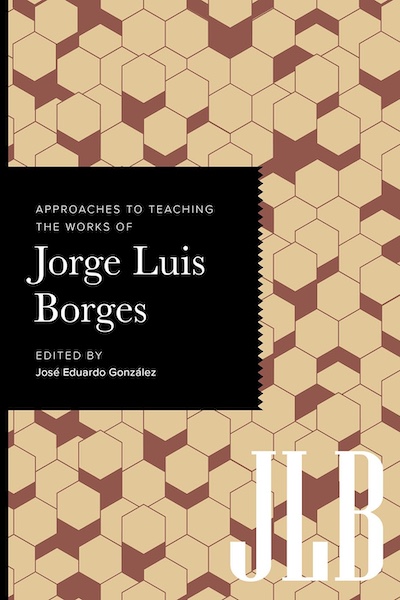
Approaches to Teaching the Works of Jorge Luis Borges
Edited by José Eduardo González
Modern Language Association of America, 2025
José Eduardo González is Associate Professor of Spanish at the University of Nebraska, where he specializes in “Contemporary and Recent Latin American Narrative.” He is the author of Borges and the Politics of Form.
Publisher’s Description: Often considered a writer who transcends national borders, Jorge Luis Borges also aimed to reinvent the history and traditions of his own country, Argentina. His unconventional works appeal to students, who nonetheless can find his richly intertextual prose challenging. Addressing courses in Spanish and in English, this volume offers innovative approaches that help students navigate the texts, engage with them emotionally and creatively, and understand the time and place of their production while connecting them to the present. Part “Materials,” provides detailed biographical information about Borges as well as print and digital resources. The essays in part 2, “Approaches,” offer strategies for discussing his writing process, his manuscripts, and the material history and translation of his texts. Contributors also examine Borges’s influences, which include film, mythology, history, and ideas of Islam and Judaism; the author’s interest in humor and games; and resonances with other literary works.
Borges Criticism
Main Page — Return to the Borges Criticism main page and index.
General Criticism 1 — General literary criticism and commentary written during Borges’ life, 1957–1986.
General Criticism 2 — General literary criticism and commentary written from 1987 to 1999.
Poetics — Criticism written about Borges’ poetry and poetics.
Comparative Criticism — Borges criticism that compares Borges with other writers or locates Borges’ work within a broader literary context such as genre fiction or Latin American Literature.
Political & Theoretical Criticism — Borges criticism with a strong political, theoretical, or philosophical component: Marxist critique, postmodernism, postcolonial studies, gender studies, queer theory, disability studies, etc.
Religious & Esoteric Criticism — Borges criticism from a religious, metaphysical, or esoteric perspective.
Scientific Criticism — Borges criticism within the disciplines of science, mathematics, and technology.
Author: Allen B. Ruch
Last Modified: 28 October 2024
Main Borges Page: The Garden of Forking Paths
Contact: quail(at)shipwrecklibrary(dot)com

